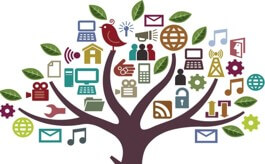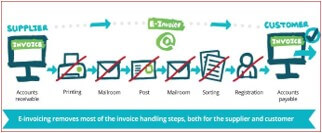
Would you like to start a conversation with other industry leaders to brainstorm a challenge or to just know more on a particular topic?
Engage in online discussions with your Peers
Start NowThe Procure 2 Pay process has largely lagged in Digital Transformation journey where other processes or areas have fared very well and gone to digitization and automation.  Leading organizations need to invest in more responsive, agile and real-time systems to automate and digitalize this function. Very often, organizations fail to achieve full potential of digitaltransformation journey. They automate existing paper-based processes without thinking or looking through actual business mindlessly by employees without seeing the end outcome result which they’re trying to achieve. It doesn’t include digitizing the paper-based process as a self-service web. The unnecessary departmental silos are merely exercises in shuffling paper around redundant processes, executed.
Leading organizations need to invest in more responsive, agile and real-time systems to automate and digitalize this function. Very often, organizations fail to achieve full potential of digitaltransformation journey. They automate existing paper-based processes without thinking or looking through actual business mindlessly by employees without seeing the end outcome result which they’re trying to achieve. It doesn’t include digitizing the paper-based process as a self-service web. The unnecessary departmental silos are merely exercises in shuffling paper around redundant processes, executed.
Digital P2P
The Digital Procure-to-Pay (P2P) system is a fully integrated solution designed to support an end-to-end process that begins with goods and services requisitioning and ends with payment to Business Partner. Procure-to-pay solutions use a scan-and-capture service, supplier portal and/ or a multi enterprise network to enable suppliers to submit invoices electronically and core e-procurement functionality (including e-requisitioning, approval workflow and e-catalogue management). It allows for collaboration, visibility, and transaction automation between business partners.
Just like a fish cannot survive without water, the dream of
Digital India can’t be achieved without Digital P2P.
It increases agility, reduces costs, visibility of transactions and minimizes risk. The transactions flow through multi-level approval which cuts through various functions of an organization such as SCM, Warehouse, Accounts Payable, Treasury etc. It allows companies to negotiate and confirm orders with suppliers and trading partners, create electronic fulfilment documents, track inventory and payments in real-time. The Key Features of Digital P2P is auto creation of PO, PO Acknowledgement, Shipping Notification, Inventory Tracking, Invoice Upload, OCR capability, Invoice Processing and visibility of information in real time on the portal. The portal or platform provides complicated workflow with multi-level approval matrix which can be configurable with automated document checking and invoice discount program.
multi-level approval which cuts through various functions of an organization such as SCM, Warehouse, Accounts Payable, Treasury etc. It allows companies to negotiate and confirm orders with suppliers and trading partners, create electronic fulfilment documents, track inventory and payments in real-time. The Key Features of Digital P2P is auto creation of PO, PO Acknowledgement, Shipping Notification, Inventory Tracking, Invoice Upload, OCR capability, Invoice Processing and visibility of information in real time on the portal. The portal or platform provides complicated workflow with multi-level approval matrix which can be configurable with automated document checking and invoice discount program.
Key Benefits
- Provides Transaction Visibility to supplier which increases confidence
- Reduces Processing Cycle Time (AP) by enabling straight through processing i.e. Very high First pass yield.
- Lowers transaction processing costs from automation by recuing re-work.
- Improves cash management position by enabling Invoice discounting.
- Integration with different ERP systems/ Applications which reduces multiple data entry.
The Welcome Change
Big Kudos to our digital savvy Prime Minister Shri Narendra Modiji who finally incorporated digital signature in invoicing and records under central excise and service tax in Budget 2015-2016 which is a giant step towards digitization. The authentication of invoices by digital signature is prescribed in Budget 2015-2016 vide Service Tax Notification No. 5/ 2015 - Service Tax dated 01.03.2015 and Excise Notification No. 8/2015- Central Excise (N.T.) Dated 1st March 2015. The rules and procedures are defined in respective notification which organization needs to comply for moving to digital invoice.
Digital P2P trend has been picked by large organizations post
amendment of excise and service Tax law on digital signed invoice.
The Information Technology Act (IT Act) gives legal recognition to electronic means of record keeping, execution and transmission of financial and legal documents and also confers legal recognition to a document authenticated by means of digital signatures. The IT Act also emphasized usage and acceptance of electronic records and digital signatures as legal medium of corporate governance by the government and its agencies
The Challenges
This should imply that all businesses are entitled to use digital signatures for all the invoicing that they do and their customers entitled to take credit. Most VAT and CENVAT authorities have limited training or opportunity on this due to low adaptability by businesses. Hence, they are neither familiar with the legal basis of these innovations nor do they have resources to refer back for technological help. In addition, there's been a slow beginning in terms of states explicitly recognizing digital signatures in the VAT law. The gradual signs of adaptation by government agencies are apparent in its acceptance of online returns, e-forms, accepting e-mails as valid mode of communication, etc.
However, digital signatures need to be embraced much more thoroughly than currently being done.
Anyhow, digital P2P trend has been picked by large organizations post amendment of excise and service Tax law on digital signed invoice. In modern business, it is very difficult for businesses to provide invoices that are physically signed for thousands of shipments that are made across the country every week.
Global Practice
There are an increasing number of cases globally where accounting is done centrally for Group Companies (by another company in same group) or outsourced to service provider (by handing over to an outsider). This is not too common in India but picking very well. Clearly, it would radically change the process of outsourcing the accounting in both situations if the invoicing can be digitized. Over the next decade, spend and sourcing is going to be radically transformed by connected digital processes. But getting there will mean tearing down many of the walls and boundaries that today artificially and wastefully divide and separate the activities of sourcing, buying, supplier management and payment.
Giant Step Forward
Therefore, digital invoicing is the next giant step companies should now undertake and digitize the process which will facilitate to transform to Digital India. It will not only transform P2P process in India which will match many advanced countries, but also leave some behind as well. Just like a fish cannot survive without water, the dream of Digital India can’t be achieved without Digital P2P.
ABOUT THE AUTHOR

Ram is a Finance Professional (CA & ICWA) and SAP FICO Consultant with around 15 Yrs. of rich Experience in diverse roles & responsibilities. Handled various aspects of Financial Management including Finance Operations, Business Process Management, SOX Compliance, ERP (SAP) Implementation, Project Management (Shared Services Outsourcing), Finance Transformation, MIS etc. He is part of Finance Team of Dr Reddy’s Laboratories Ltd and played critical Role in Digital P2P initiative in the organization.




